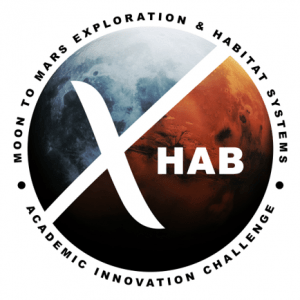NASA and the National Space Grant Foundation selected six university teams to develop advanced and innovative design ideas that will help solve Artemis mission challenges. The selections are part of the 2022-2023 Moon to Mars eXploration Systems and Habitation (M2M X-Hab) Academic Innovation Challenge sponsored by NASA’s Artemis Campaign Development Division.
The 2022-2023 M2M X-Hab Academic Innovation Challenge is an opportunity for NASA to build strategic partnerships with universities and tap into the ingenuity of the future Artemis Generation workforce. The challenge provides STEM (Science, Technology, Engineering and Mathematics) students interested in aerospace careers with hands-on development and research experience, while strengthening NASA capability for missions to the Moon, Mars, and beyond. Past student participants have gone on to careers in the aerospace industry, including at NASA.
The 2022-2023 project proposals will provide solutions for overcoming barriers and advancing technology in the following areas:
- Crew Mobility Systems
- Habitation Systems
- Vehicle Systems
- Foundational Systems
- Robotic Precursor Activities
- Human Spaceflight Architecture Systems (Gateway-focused)
Universities in support of the M2M X-Hab 2022-2023 Academic Innovation Challenge will advance science and technology innovations for Artemis missions with the following projects:
Plant Extraction for Future Genomic Sequencing Onboard Space Flights
Ohio State University, Columbus, OH
Growing plants in a space environment will be critical in providing food to humans during future long-duration missions. In preparation for the next steps into deep space exploration, NASA has proposed to extend genomic sequencing capability from only using microbes to also include plants. This will allow a deeper understanding of how spaceflight environmental factors such as microgravity or altitude may affect plant growth in comparison to how they grow on earth, as well as assure the health and safety of a plant-based bioregenerative life support system.
Regenerable Liquid Desiccants for High-Efficiency Humidity Control In Microgravity
University of North Texas, Denton, TX
The project will build upon absorber-desorber systems and leverage successfully demonstrated vortex style separators to achieve high-efficiency and high-throughput humidity control. The team will first learn about gravity dependent multiphase flow and phase separation technologies, select a regenerable liquid desiccant, and start working on design and modeling of contactors that can be integrated into a carbon dioxide (CO2) removal system. The team will then build a subscale prototype to demonstrate its capability of continuous dehumidification/re-humidification, and predict the performance and scalability of a full-size system.
Move That Goo!
North Dakota State University, Fargo, ND
Students are poised to determine and develop the proper materials to build a new unique manifold with targeted mechanical properties required for liquid amine absorption used to remove CO2 from the atmosphere, a critical task for recycling breathable air in space habitats. With a roughly once cubic meter pellet-feed 3D printer in place, the team is additively manufacturing unique manifold designs from a multitude of polymeric materials. This will provide specific mechanical properties relevant to the project as they draw upon their extensive history developing adaptive airfoils for a variety of applications.
Logistics Transfer on the Lunar Surface
University of Maryland, College Park, MD
The University of Maryland Space Systems Laboratory will investigate various approaches to logistics transfers on the lunar surface for both internal and external surface habitats. The team will leverage their extensive research with unique capabilities in space habitat design and simulations and draw upon their experience with space robotics, on-orbit structural assembly, and space human factors.
Head and Body Monitoring Sensorimotor Assessment Tool
University of Michigan, Ann Arbor, MI
Students will deliver a functional prototype for wearable head and body motion monitoring that provides metrics and data to characterize movements. It requires a visualization system and uses virtual reality (VR) simulation-based test verifications. Head and body motion monitoring will utilize a lightweight wearable Inertial Measurement Unit linked with VR motion sensor technology. Gravity-state transition simulations will also be developed in VR to test and implement the tool.
Autonomous Cargo Management and Distribution for Surface Logistics
University of Michigan, Ann Arbor, MI
The project will deliver a functional prototype for a transportable and modular cargo management and transportation system that adapts to multiple preexisting configurations. The Bioastronautics and Life Support System Team will design and construct a movable crane on a cross track that can identify and retrieve stored cargo. Future mating devices will accommodate different cargo sizes and weights. The system will be designed to operate in environments ranging from microgravity to 1g. Radio frequency identification chips will also be used to autonomously identify cargo. The system will be transportable due to its lightweight and space-conscious design, is operable in multiple environments, and offers easy to assemble modularity.
Learn how to solve NASA’s toughest problems and win cash awards, internships, and more: https://www.nasa.gov/solve/
View last year’s X-Hab Challenge Projects here: https://www.nasa.gov/feature/nasa-asks-university-teams-for-moon-mars-mission-design-ideas






























